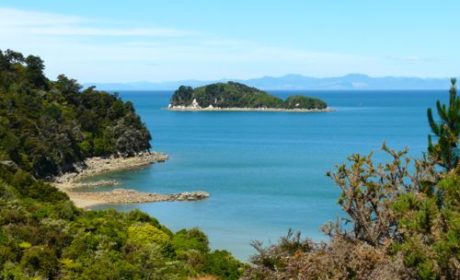The Norfolk Coastal Path walk is a fun active travel adventure for boomers traveling in the UK. The trail, a 3-hour drive from London, hugs the coastline along the North Sea. Sue King shares her experience and tips for this beautiful walk.
The Norfolk Coastal Path is an 83-mile trail which encompasses far-reaching beaches, tiny villages, salt marshes, grassy cliff tops and quaint seaside towns. Starting in the Victorian resort of Hunstanton and finishing on the wide sandy beaches of Hopton-on-Sea, the entire path takes around five days to complete.
Accommodations along the path ranges from campsites to hotels. Happily there’s no shortage of decent country pubs in which to re-fuel en route.
As a regular visitor to Norfolk, I had experienced tantalizing glimpses of the county’s glorious coastal path many times. It wasn’t until last year, however, that I had the opportunity to hike a section of it.
Table of Contents
A two-day itinerary on the Norfolk Coastal Path walk

Due to time restrictions, I decided to walk north from the seaside town of Cromer with its fish n’ chip shops and traditional pier to the sweeping sand dunes of Holkham Beach, 24 miles away. I planned to complete the walk over two days, allowing plenty of time to take in the diverse sights of the coastline.
Norfolk Coastal Path Day One

After kickstarting the day with a hearty Full English Breakfast at Browne’s, a cozy café on Bond Street in Cromer, I made my way through the sleepy streets to the seafront. Casting a glance at the pier, one of the few left in England that still hosts a traditional variety show in its theatre, I made tracks to the beach.
It was a bright, crisp September morning and England was experiencing an Indian Summer. With the cliffs on my left, I reveled in the tranquillity of the deserted beach.
It was along this coastline that the bones of the West Runton Mammoth were discovered in 1990 following a storm. The area is a favorite spot for fossil-hunters and the remains of pre-historic steppe bison, rhinoceros and hippos have also been found.
Sheringham
After a few miles of blissful solitude, I found myself back in civilization as I approached my second seaside resort of the day, Sheringham. Known for its heritage steam railway, it attracts railway enthusiasts from all over the country and, like Cromer, the town is a popular spot for family vacations.
I didn’t linger in Sheringham, but ascended to the Coastwatch Lookout at Skelding Hill, one of a number of coastal surveillance stations situated around the UK. From the hill, I was rewarded with spectacular views of the cliffs in both directions.
I continued on the pathway across softly undulating hills as the sun sparkled down on the North Sea.
Weybourne
After around three miles, I descended into the tiny village of Weybourne with its shingle beach, flint cottages and winding country lanes.
Salthouse
From there, a shingle track cut across the marsh to Salthouse, home to The Dun Cow Pub. With wide-ranging views across the marshes, it was the perfect place to enjoy a pint of Norfolk ale and a delicious home-made pie with peas and mash.
Boomer Travel Tip
MedjetAssist Members who are hospitalized 150 miles from home receive medical transport to a home-country hospital of choice. Memberships from $99.
Crossing the Cley Marshes Nature Reserve, I noticed several birdwatchers at the ready with their binoculars and long-range lenses. The area has the reputation of being one of the UK’s best bird-watching sites . An abundance of water birds flock here year-round.
Cley-next-the-Sea
Arriving at Cley-next-the-Sea, I had little trouble locating my night’s lodging which also happened to be an iconic Norfolk landmark. Clearly visible from the coastal path, Cley Windmill, built in the early 19th century was once used for grinding corn and is also said to have been a smuggler’s den.
These days Cley Windmill is a popular wedding venue. Luckily for me, it also offers Bed and Breakfast.
Charming and comfortable, there were some nice extra touches provided such as windmill-shaped cookies and pre-dinner drinks on the terrace overlooking the marshes. It was the perfect place to rest up and prepare for the next day’s hike.
Norfolk Coastal Path Day Two
Blakeney

After a generous breakfast, a beach stroll took me to the tiny hamlet of Blakeney. In days gone by the village was a medieval port and it now consists of a restored church, a smattering of shops and the King’s Arms pub which is in a traditional Georgian building.
Nearby Blakeney Point is home to England’s largest grey seal colony, a national nature reserve comprising of around 500 residents. The seals are best viewed by taking a tour boat from nearby Morston Quay, a side trip which I decided to integrate into my hike.
It was thrilling to view the basking seals and their pups at close range. The tour was excellent value and the knowledgeable and humorous boat crew enhanced the experience considerably. Several companies run tours to Blakeney Point, but I opted for Ptarmigan Seal Trips.
Stiffkey
Back on dry land, I stopped off in Stiffkey for lunch at The Red Lion where I sampled the freshly-caught crab that the area is famous for.
The coastal path continued through the open landscape with the salt marshes to one side and the Norfolk countryside on the other. I spotted what I later found out to be a short-eared owl and saw numerous migratory wildfowl en route.
Wells-next-the-Sea
Wells-next-the-Sea is an active fishing harbour and was the final town I was to visit on my hike. After perusing a handful of the galleries and gift shops, I passed families enjoying fish n’ chips and ice creams on the quay.
The Wells Harbour Miniature Railway (closed 2021) transports visitors from the town to the beach approximately a mile away. In the spirit of my walk, I resisted the temptation to catch a lift and set off along the harbour walkway.
Wells Beach

Wells Beach is a sweeping swathe of sand bordered by an intense forest of pine trees. Backing onto the trees, are a long line of colorful and picturesque beach huts, each decorated with their own quirky designs.
The beach huts are featured in many locally produced paintings, photographs and postcards. Like the local windmills, the huts are an iconic symbol of Norfolk.
Holkham
For the final stretch of my walk, I followed the trail amongst the pine trees and finally emerged onto the beach at Holkham. By now the tide was out and I was treated to a panoramic view of one of the most unspoilt stretches of golden sand in the country.
The sheer vastness of the landscape and abundance of sky is a rarity in England. I sat in the dunes gazing out to sea for half an hour, reflecting on my journey.
I could have stayed for hours, but it was time to head inland. I had a dinner date with local friends where I was going to celebrate the completion of my Norfolk coastal adventure.
While you’re on the east coast of the UK, visit Northumberland as part of your travel plans.



